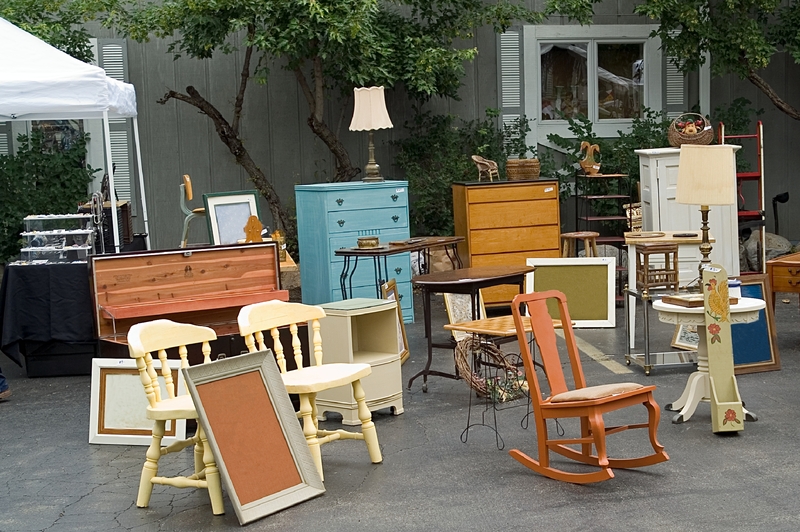Make Old Things New Again With Fresh Upcycling Approaches
Upcycling, a creative and eco-conscious trend, is breathing new life into old, unwanted items. As more people embrace sustainability and resourcefulness, discovering unique ways to make old things new again grows increasingly popular. This article showcases innovative upcycling strategies for various materials and objects. Whether you're a seasoned DIY enthusiast or just starting your journey towards a greener lifestyle, you'll find essential tips, inspiration, and practical projects throughout this comprehensive guide.

What Is Upcycling?
Upcycling refers to the process of transforming waste materials or unwanted products into new items of higher value or quality. Unlike recycling--which breaks down materials for reuse, often resulting in a lower grade--upcycling preserves an object's structure and enhances its aesthetic or function.
Upcycling key benefits:
- Reduces landfill waste
- Saves money by reusing materials
- Promotes creativity and innovation
- Gives everyday items a unique, personal touch
Why Choose Upcycling Over Traditional Recycling?
Upcycling goes beyond simple environmental benefits. By reimagining the potential of discarded items, it encourages us to view waste as opportunity. Upcycling methods often demand less energy than recycling, since many processes don't require heavy machinery or extensive chemical treatments. Instead, they promote creativity and self-expression, resulting in objects with a new story and extended lifespan.
Creative Ways to Make Old Things New Again
If you're looking for fresh approaches to upcycling, consider these ideas for breathing new life into everyday items:
1. Transforming Furniture
- Refinish and Paint: Use vibrant paints, stains, or even decoupage techniques to give an old dresser, chair, or table a brand-new appearance. Don't be afraid to mix colors or patterns for a one-of-a-kind piece.
- Repurpose Functionality: Turn a vintage suitcase into an eye-catching side table, or convert ladder rungs into rustic wall shelves.
- Upholstery Magic: Update worn-out sofas with modern fabrics or bold prints for a customized look.
2. Upcycling Clothing and Textiles
- T-shirt to Tote: Old shirts, jeans, or jackets can be cut and sewn into reusable shopping bags or pouches, helping reduce single-use plastics.
- Patchwork Projects: Combine scraps of different fabrics to create unique quilts, pillow covers, or wall art.
- Accessory Upgrades: Add buttons, embroidery, or fabric paint to refresh hats, scarves, or bags.
3. Repurposing Kitchenware
- Jar Innovations: Mason jars can become vases, soap dispensers, lanterns, or stylish storage for dry goods and spices.
- Plate and Cup Marvels: Stacked plates and teacups make elegant two- or three-tiered stands, ideal for serving snacks or displaying jewelry.
- Utensil Decor: Old forks, knives, or spoons can be bent and crafted into hooks, handles, or charming garden markers.
4. Electronics and Technology Upcycling
- Retro Tech Decor: Outdated radios, TVs, or computer parts can be transformed into lamp bases, clocks, or conversation-starting decor pieces.
- Cable Holders & Organizers: Repurpose old charging cables, headphones, or adapters as creative solutions for organizing your workspace.
- Keyboard Art: Individual keys can be removed to make custom jewelry, keychains, or fridge magnets.
5. Garden and Outdoor Upcycling Ideas
- Planters and Pots: Reimagine boots, buckets, or tin cans as quirky garden planters for flowers, herbs, or succulents.
- Pallet Perfection: Wooden pallets are easily converted into garden benches, compost bins, or vertical gardens.
- Decorative Pathways: Broken plates, tiles, or bottle caps can be arranged to create vibrant mosaic stepping stones.
Innovative Upcycling: Modern Trends and Techniques
Today, upcycling is not just about simple DIY projects. Advances in techniques and materials have led to high-level innovation in the upcycling world. Here are some exciting trends that can help you make old things fresh again:
Digital Fabric Printing
Repurposing textiles is getting an upgrade with digital fabric printing. This technology allows you to apply personalized designs directly onto fabric, breathing new life into old garments, curtains, or tablecloths. Add a modern twist to vintage finds by printing photos, art, or inspirational quotes.
3D Printing and Prototyping
3D printing can supplement upcycling by creating missing parts for vintage items, such as knobs for drawers or footings for furniture. You can even craft custom connectors to join unrelated objects, such as a lamp base made from an old camera and a new 3D-printed shade.
Eco-Friendly Paints and Finishes
Upcycling doesn't have to rely on traditional chemical-laden paints or adhesives. Now, you can use eco-friendly products that are better for your health and the planet. Look for water-based varnishes, plant-based stains, or biodegradable glues to complete your projects in an environmentally responsible way.
Upcycling for Beginners: Getting Started
If you're new to upcycling and looking for fresh approaches, follow these simple steps to kick-start your journey:
- Choose Your Material: Start with items you already have at home--a pair of old shoes, a damaged chair, or even empty glass jars.
- Research Inspiration: Social media platforms like Pinterest and Instagram are gold mines for upcycling ideas. Search hashtags like #upcycle or #makeoldthingsnewagain to discover endless creative possibilities.
- Gather Your Tools: Basic upcycling projects require just a few supplies--scissors, glue, paint, and brushes can get you started on most projects.
- Plan Your Design: Sketch your idea or visualize the transformation. Decide on your color palette, intended use, and overall look.
- Start Creating: Give yourself permission to experiment. Remember, the goal is to make old things new again--imperfections add character!
Advanced Upcycling Approaches
For those wanting to push the boundaries, consider these advanced upcycling methods:
Collaborative Upcycling
Join forces with local artists or makers. Community upcycling workshops can help you source more materials, gain fresh perspectives, and create larger-scale projects such as urban murals, communal gardens, or charity furniture makeovers.
Upcycling for Business
Many entrepreneurs have turned upcycling into a viable business. From handmade jewelry using vintage watch parts to bespoke furniture crafted from salvaged wood, there are infinite ways to turn your fresh upcycled creations into profitable ventures. Marketing your original products as sustainable and eco-friendly can attract environmentally conscious customers.
Combining Art and Functionality
- Sculptural Lights: Combine found objects like bicycle wheels, colanders, and wire to construct artistic lamps or chandeliers.
- Wearable Art: Use discarded metal, plastic, or glass to craft statement jewelry or accessories.
- Functional Installations: Install upcycled items in public spaces as seating, planters, or interactive art.
Tips for Successful Upcycling
Want to make sure your upcycling efforts successfully transform old things into something new, stylish, and functional? Consider these expert tips:
- Start Small: Don't overcomplicate first projects--simple transformations like repainting a flower pot can be very rewarding.
- Choose Quality Materials: Select items that are still structurally sound as your base--they'll hold up better and last longer post-makeover.
- Don't Be Afraid to Experiment: Sometimes the most interesting pieces come from taking risks. Mix styles, colors, and textures to see what works.
- Finish Properly: Use the right sealants, paints, or finishes to ensure durability and longevity of your upcycled item.
- Share and Inspire: Post your creations online or participate in local maker fairs to inspire others to join the upcycling movement.
Environmental Impact: How Upcycling Makes a Difference
Making old things new again isn't just about saving money or adding style to your home. It's a fundamental way to reduce environmental impact. Manufacturing new goods requires vast amounts of energy, resources, and transportation. By upcycling, you help:
- Conserve raw materials
- Reduce carbon emissions
- Minimize plastic and landfill waste
- Support local economies and craftspeople
According to the Environmental Protection Agency (EPA), in 2018, Americans generated over 292 million tons of municipal solid waste. By reimagining the use of just a fraction of these unwanted materials, individuals can make a significant positive change for the planet.
Community Upcycling Initiatives
All around the world, creative communities are tackling waste by joining forces. Examples include:
- Repair Cafes: Pop-up spaces where people bring broken items to be fixed and refashioned with help from skilled volunteers.
- Tool Libraries: Share tools and equipment to inspire more people to change, repair, and upcycle rather than toss.
- Local Swaps: Community swap events encourage the trade of clothing, furniture, kitchenware, and craft supplies -- items that might otherwise end up in the dump.

Frequently Asked Questions About Upcycling
Is upcycling expensive?
Not necessarily! In fact, many upcycling projects use free or low-cost materials and basic household tools. The more creative you get with what you own or can source locally, the less you'll spend.
Can upcycling be done with children?
Absolutely! Getting children involved teaches sustainability and creativity. Just supervise any sharp tools or hot glue guns, and let their imaginations run wild.
Are upcycled products durable?
Yes, especially if you use strong base materials and proper finishing techniques. Many upcycled products, such as solid wood furniture or glass jars, are even more durable than their new, plastic counterparts.
How can I learn more about upcycling?
There are countless books, websites, and online tutorials dedicated to upcycling. Local makerspaces or adult education classes may also offer workshops.
Conclusion: Refresh, Reuse, and Reinvent With Upcycling
Upcycling offers endless opportunities to enliven your surroundings, declutter, and make a positive environmental impact--all while exploring your creative spirit. When you make old things new again with fresh upcycling approaches, you transform both your items and your mindset. Upcycling encourages us to see beauty and utility in the unexpected, proving that with a little inspiration and effort, what's old can truly become new again.
So, the next time you're about to throw something away, stop and ask: How can I breathe new life into this? With the fresh ideas and approaches detailed above, your next upcycling project is just waiting to be discovered.
- Experiment with upcycling furniture for a stunning room revamp
- Breathe new life into old clothes with simple sewing or painting
- Put broken items to creative use outdoors and in the garden
- Get involved in your community to learn and share upcycling success stories
Let the upcycling revolution start at home--and watch as your old things become new again, with style and purpose!